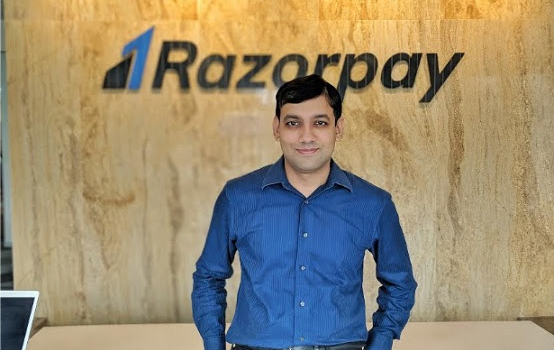Digital Payments increased by 106% since January 2019: Razorpay
Razorpay, India’s first converged payments solutions company, launched the third edition of its ‘The Era of Rising Fintech’ report in Hyderabad today. This report provides an in-depth study of the rapidly evolving FinTech ecosystem in India. It analyses the patterns of digital transactions and the impact of industry innovations such as UPI which are harnessing a digitally inclusive economy.
Here are some interesting insights about India’s adoption of digital payments. All findings in this report are based on transactions held on Razorpay platform.
(AMJ: April-May-June, JAS: July-August-September)
- Customer demand for Digital Payments has increased by 106% since January 2019
- UPI recorded a growth of 222% from January – September, 2019
- The highest adoption of digital payments was seen in the Food and Beverage sector (25%), followed by Financial Services (21%) and Tours and Travel (15%)
- Digital transactions grew by 383% in one year (April FY’18 – March FY’19)
- The country’s Silicon Valley, Bangalore, continues to top the list of the most digitised cities, followed by Hyderabad, Delhi, Mumbai, and Pune
- In JAS, among all the payment modes available, 43.5% consumers preferred to make online payments with cards, 40.4% via UPI and 10.9% through net banking
- Although the usage of cards saw a growth of 62% from January – September, it saw a decline of 9% from AMJ to JAS
- Nationally, Google Pay is the most preferred UPI app with a contribution of 62% in JAS, followed by PhonePe with 25%, Paytm with 6% and Bhim with 5%
- Share of wallets doubled from 0.8% (AMJ) to 1.6% (JAS)
Shashank Kumar, CTO and Co-founder, Razorpay said, “The Digital payments in India is witnessing an unprecedented transformation. A shooting growth of 383% over the past year is indicative of the level of digital adoption among Indian businesses and consumers. The increasing use of UPI powered applications and traditional businesses embracing new digital payment modes has resulted in creating an ecosystem of technologically evolved and savvy users. A number of game-changers such as universal acceptance of recurring payments and more SME-oriented products and services have proven to be beneficial for digital businesses this year. We are enthusiastic to continue to be a significant part of this FinTech revolution and do our bit to make payments simple for all of us.”
Tier 2 businesses will drive 40% of digital transactions by 2020 which will facilitate greater dependence on the digital infrastructure. The country can also expect 50% of internet users to start using digital payments by 2022.
The company is of the view that incentivised programs to promote digital payments and greater collaboration between banks and FinTech firms will be beneficial for the digital payments ecosystem. A low cost infrastructure will ensure prolonged sustainability which will result in more POS terminals accompanied by better and cheaper payment options for merchants. The Razorpay report also expects that 15% of India’s GDP will be flowing through digital payments by 2020.
Razorpay has been charting an exponential growth since its inception. They grew by 500% in the last one year. The company currently powers digital payments for over 600,000 businesses like IRCTC, Airtel, BookMyShow, Zomato, Swiggy, Yatra and Zerodha, among others and plans to increase this to 1,000,000 by 2020. This converged payments solution company expects a 5x growth in its revenue by the end of the next fiscal year.

